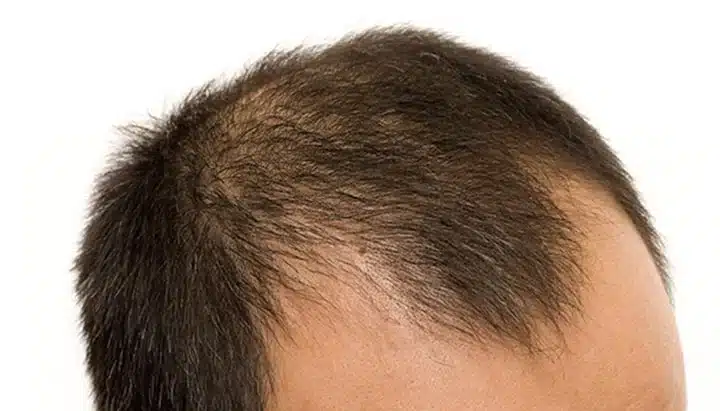Male-pattern baldness, also known medically as androgenetic alopecia, affects numerous men across the globe. Characterized by a receding hairline and thinning at the crown, this condition can eventually lead to complete baldness in some individuals. Understanding male-pattern baldness is crucial for men facing hair loss and seeking preventive strategies.
Causes of Male-Pattern Baldness
The primary causes of male-pattern baldness are genetic factors and hormonal changes. Testosterone, a hormone predominantly found in men, converts into dihydrotestosterone (DHT). DHT can shrink hair follicles leading to hair loss.
Other medical conditions contributing to hair loss include thyroid disease, autoimmune disorders, and fungal infections.
Symptoms of Male-Pattern Baldness
Common signs of male-pattern baldness include:
- A receding hairline
- Thinning at the crown
- Progression to complete baldness in some cases
Note: Hair loss can also occur at the temples and the back of the head in certain instances.
Diagnosis and Treatment
Diagnosis of male-pattern baldness typically involves a physical examination, a review of medical history, and blood tests. Occasionally, a scalp biopsy may be necessary to eliminate other causes of hair loss. Obtaining a proper diagnosis from a healthcare professional is vital for determining the most suitable treatment approach.
Treatment options include over-the-counter and prescription medications, hair transplant surgery, low-level laser therapy, and platelet-rich plasma therapy.
Two widely recognized medications for treating male-pattern baldness are minoxidil and finasteride. Minoxidil is a topical solution applied to the scalp, while finasteride is an oral medication that hinders the conversion of testosterone to DHT.
Hair transplant surgery involves moving hair follicles from a healthy part of the scalp to a bald or thinning area. Low-level laser therapy utilizes low-intensity laser light to stimulate hair growth and enhance scalp health. Platelet-rich plasma therapy uses the patient’s own blood plasma to promote hair growth and improve overall scalp health.
Lifestyle Changes for Male-Pattern Baldness
In combination with medical treatments, adopting certain lifestyle changes can help manage male-pattern baldness. Maintaining a balanced diet rich in vitamins and minerals can support hair health and prevent further loss.
Moreover, managing stress through activities like yoga, meditation, or exercise can help mitigate hair loss and improve overall well-being. Avoiding harsh hairstyles such as tight braids, ponytails, hair ironing, and frequent blow-drying can also promote healthy hair growth.
Conclusion
Male-pattern baldness is a common condition affecting millions of men globally. Understanding its causes, symptoms, and treatment options is imperative for those experiencing hair loss and looking to take preventive measures. By pursuing appropriate treatments and adopting beneficial lifestyle changes, individuals can regain their confidence with fuller hair. If you are experiencing hair loss, consulting with a doctor or dermatologist is recommended.
